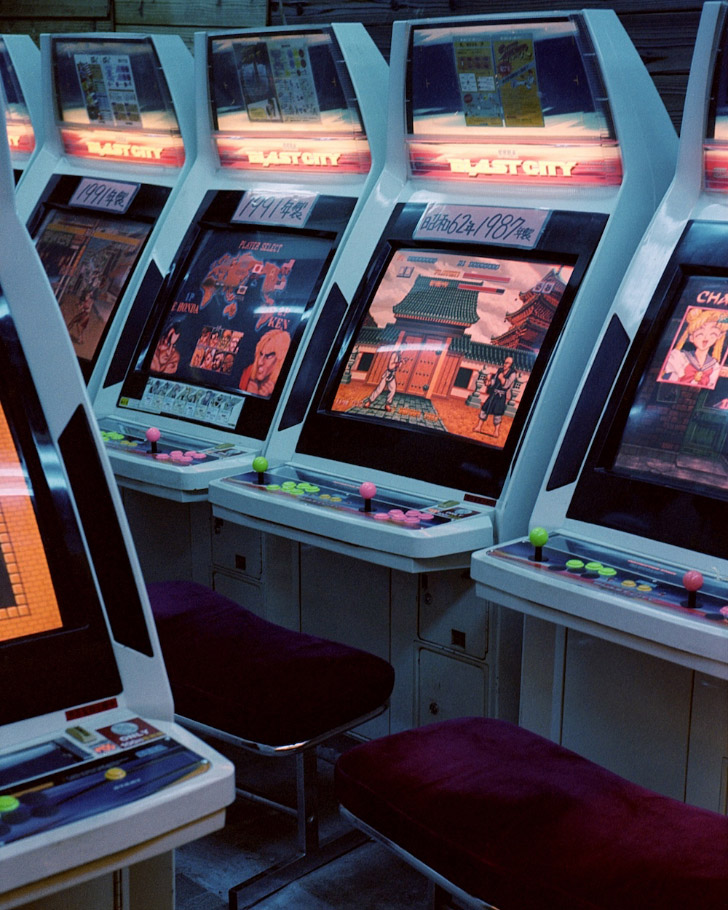Parker Woods
A picture is worth a thousand words, but how loud are those words? Some pictures wreak havoc with its blurry movements; a sliver of a chaotic life captured on film. Others, remain still and quiet, as if they don’t want to be noticed. The latter, however, are the ones that more often than not, catch my eye and linger above my head for some time. Removing the viewer temporarily from reality and transporting them into another realm with a soft push isn’t an easy feat. But for Parker Woods, this is second nature. I spoke to him about his photography, and everything pertaining to it.
Could you briefly walk me through your upbringing and how that shaped you as a photographer? What sparked your interest in this field?
I’m an only child, raised in a Jewish household, so there was no shortage of opinions as to what my career should be—none of which included being an artist. I think that’s at least part of what made the prospect of working in the art industry so enticing to me. I loved the idea of finding success and fulfilment in something that everyone told me was too hard. At first glance it sounds petty, even spiteful, but it’s always been more about showing myself that I’m capable rather than disproving the general consensus. Every time I’m pushed down by some tedious, emotionally draining, or overwhelming aspect of the industry, it only makes me push back harder. I can’t say that anything else does that for me.
I still remember the shirt you were wearing when we first met. I believe it said “time is an illusion,” and we spoke about that at your booth at Tokyo Art Book Fair. Funnily enough, your photography alludes to that sentiment, in my opinion. It’s as though time is suspended, or at least slowed down, in your photos. How did you develop your style?
That seems like such a long time ago!
Starting out shooting film has played a huge role in shaping how I approach photography now, both pragmatically and stylistically. As corny as it sounds, having a limited number of exposures, combined with the sometimes-fickle nature of film, made me value every shot individually. You lose that with digital when not nearly as much rides on a single exposure. There’s just no danger in it. So, within those 10, 16, or 36 exposures, I want to see what I can get away with. It sounds paradoxical but my style is hinged on trying new things. I’m always the one taking the photo so there’s cohesiveness between my new and old work, but every shoot I make it a point to try something new.
What’s the most imperative thing when you take a photo? Is there anything you always keep in mind?
The two thoughts that are always on my mind when I’m taking photos are “what makes this interesting?” and “am I adding to, or subtracting from, something that is or isn’t there?” That doesn’t necessarily mean that I don’t take the photo if the answer to either is no, but I feel like they’re important questions to ask yourself. They’re especially important to be aware of in my work since I’m a white male coming from a middle-class socioeconomic background—privilege can make these facts easy to forget.
I see. Excuse the basic question but what inspires you? It could be a film, book, record, or anything!
Without a doubt I get the most inspiration from looking at the work of my peers and of photographers I admire. It’s easy to feel guilty for admitting that someone else’s work is the reason why your image, or series, or body of work exists, but the truth is that I wanted to become a photographer because of other photographers so, naturally, I’m going to draw from their work. That’s not to say that copying someone’s work is the same as being inspired by it: it’s not. However having the self-awareness to differentiate between the two is oftentimes the difference between good art and “content.”
Perhaps this is unintentional, but your personality is very much reflected in your images. You make me laugh until I don’t know who I am but you also know when and how to harness that energy. In short, you’re boisterous when it’s appropriate, but it seems as though for the most part, you have your bursts in moderation. There are humorous elements sprinkled across your work, but they don’t ever detract from the subject. Further, they don’t seem gimmicky or cliche. How do you marry the funny, quirky side of you with the more serious, solemn side of you?
Incorporating satire into some of my work helps me remember to not take things so seriously. I definitely tend to ride a fine line though—I’m always reeling my ideas back in. My initial concepts usually revolve around terrible puns and I have to revisit them multiple times until I get something that I feel is still a little tongue in cheek but also photographically appealing. In the moment, I want to take the quirkier images for me, but I enjoy them more in the end because of how much they humanize the subjects.
p.s. I love you.
Out of all the different avenues you could explore, why did you pursue fashion photography? What’s attractive about taking portraits from a fashion perspective? Do you plan on making a foray into different types of photography?
To me, fashion photography is lawless. I’ve found I have the most freedom when shooting fashion and as someone who likes to experiment, it’s what ends up being most important to me. Art and fashion are both already nebulous concepts separately, so the marriage of the two is like a free-for-all in which I feel right at home.
I do my fair share of commercial work though and I continue to shoot a variety of styles for different projects. I just love fashion the most!
This might be irrelevant but thanks to the (mostly) left political and cultural zeitgeist, the age-old “creepy photographer” phenomenon has been gaining some attention recently. It seems as though high profile photographers take advantage of their position and power to get the perfect shot, albeit it goes without saying that not all photographers do it. What are your thoughts on this?
Although condemning photographers who are caught abusing the power dynamic between themselves and models or members of their team has its place, it’s imperative to hold yourself and your peers accountable. You need to actively create a safe environment for the people on your sets, especially women. I hate the good-guy-façade that makes male artists feel infallible. You can abuse your power in ways less overt than sexual assault. That’s to say that the Instagram photographer culture that praises mediocre male photographers who use phrases like “visual storyteller” but only photograph naked women, who embody Eurocentric beauty standards, in suggestive or transparent situations is a culture of abuse of power. The only story they’re telling is their own and it’s boring.
Changing behavior begins with changing your own. Treat models with decency and humanity without expecting a gold star and don’t only not support shitty photographers but be proactive in engaging in open dialogues with other creatives about why certain attitudes and work is part of the problem.
I really do appreciate your thoughts on that matter. We need more people like you! Photography has always been a tool to communicate a message to the world. Is there a particular message you want to convey in your work, or is it more of a mood/atmosphere that you want to deliver?
I consider my work to be more about self-discovery than anything else. There isn’t an overt visual narrative throughout my work that depicts struggles with myself or within my life, but that’s what I see when I look through my archives. It’s not necessarily the images themselves but what I was thinking or feeling when I made that image. That’s to say that even though I might not be the one pictured, they still tell me more about myself than what’s in the photograph. It’s impossible to separate yourself from your art and that’s what I absolutely love and loathe about it. Again, I feel like it all comes back to the idea of what you choose to show in the image.
Consider this as the “free space” on those floppy bingo cards! Say whatever you want to say to the readers.
You are the artist. Take your time with your art. Inhumanely tight editorial deadlines, social media, and increasingly short attention spans are all telling you that you need to pump out masterpieces on no budget and no sleep. Don’t. Don’t let publications dictate your creative process. Don’t show work you can’t stand behind just to keep up with your feed. Don’t let your work become content. Take back your art—for yourself and for the rest of us.
That was such a sublime message to all the artists that may deal with self-doubt or even creative stagnancy. What a great way to end this! Thank you so much for your time.
Images courtesy of PARKER WOODS
interview LENA-GRACE SUDA
What to read next

















